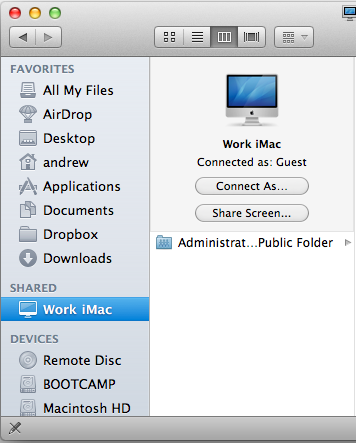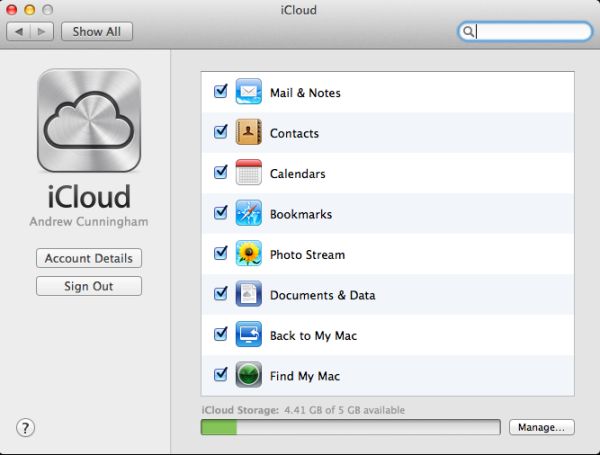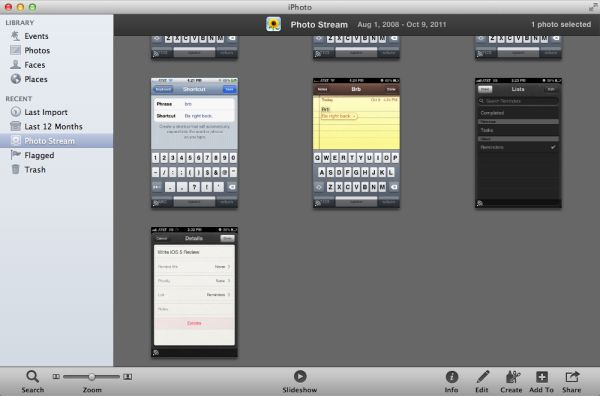iCloud on the Desktop: A Look at OS X 10.7.2 and iCloud for Windows
by Andrew Cunningham on October 18, 2011 3:01 AM ESTiCloud is included with the OS X 10.7.2 update, so Lion users out there will be able to pull it down through Software Update if they haven’t already (and even if you don’t intend to use iCloud, 10.7.2 is a major update that purports to fix many problems with the OS). Once you restart, you’re invited to enter or create an AppleID to associate with iCloud, and upon signing in you’ll see the iCloud preference pane for the first time.
There's nothing particularly interesting about the technology behind iCloud - its mail service uses a standard IMAP server, your calendar is hosted on a standard CalDAV server, and your contacts are served up by LDAP - all open and widely supported standards (meaning that, with the proper server configuration, you could get some of your iCloud data syncing with most OSes, albeit without the help of Apple's handy preference pane). As such, your iCloud accounts can easily co-exist alongside other IMAP or Exchange accounts without conflict, and using iCloud-enabled calendars in Mail and iCal feels the same as does with virtually any other service.
Novice users will appreciate the ability to access all of this using a single sign-in, but just about everybody reading this article doubtlessly has a setup that works for them already (Gmail, Dropbox, and Chrome Sync, for myself). There's nothing about these services in iCloud that's compelling enough to make a contented Gmail user switch, and there are indeed some reasons not to, including the fact that email storage space comes out of the same 5GB pool as everything else.
Other iCloud services are of a bit more interest to people who already have email accounts and calendars, though again little of it is truly new. Find My Mac is an extension of the Find My iPhone tool, which can be used to locate, lock, or remotely wipe a misplaced or stolen device - we'll talk about how it works a bit later when we discuss iCloud.com.

Back to My Mac, a MobileMe import, uses OS X’s built in Screen Sharing and FIle Sharing functionality to share the screen and the files of two Macs on two different networks. You can limit or expand its functionality by enabling, disabling, and configuring the Screen Sharing (or Remote Management) and File Sharing services as you see fit - it's one of the few iCloud services that needs some extra configuration after you turn it on. Once you have two Macs connected to an iCloud account with the same Apple ID, they will show up in each others’ Finder sidebars under Shared, which allows for easy screen and/or file sharing based on how you’ve configured them. Back to My Mac uses IPsec to encrypt data sent over the Internet, and uses Kerberos with Digital Certificates for secure authentication.
Photo Stream interfaces with iPhoto 9.2 - current iLife '11 users should be able to pull this update down through Software Update or the App Store now. You can view all your Photo Stream photos within iPhoto, but you can't directly manipulate them without downloading them to your local library. Once you've done that, you can drag the photos back to your Photo Stream to re-upload them.As on iOS, the main issue with Photo Stream at the moment is that there's no easy way to delete individual photos from iPhoto or from any of your iOS devices at present. Even if you locate and delete the pictures in the filesystem, that still doesn't delete them from all of your devices (though I do think I broke something on my Windows box - after deleting the photos from the filesystem, I couldn't make them download again without completely trashing the iCloud preferences and starting over again).
There are two ways to delete everything: the first is to disable and then re-enable Photo Stream on all of your devices, and the second is to sign into iCloud.com and wipe it all out in the Advanced settings panel. I'm hoping that Apple implements the ability to delete individual photos from Photo Stream soon, because at the moment it seems like a big downside to a pretty useful feature.












16 Comments
View All Comments
Biscuit1018 - Wednesday, October 19, 2011 - link
It depends on what you want.Its an assumption that most people need access to M/S SkyDrive or Google's Cloud Sync (or whatever's its called).
For some people a phone (like an iPhone) that works well out the box, has many great apps, and works well with an eco system.
My family have the full range of mobile devices and actually managing them all is very simple. Plus it helps drive VOD, content sharing etc.
I also need a tablet and I dont want to manage two different ecosystems. Its unfortunate but M/S are late to the party here.
Of course you are now going to say that with an XBox or a Media Centre etc. you can do the same thing and you probably can.
Its a matter of personal choice. For someone to say that WP sucks is naive. For you to beat your chest and slate Apple.. well also nonsense isnt it?
Where M/S will have it over the others will be next year when WP8 comes out and there is a working tablet. If all neatly integrates with the desktop Outlook etc and SkyDrive then M/S has a strong play.
I look forward to Windows 8 but until then M/S does not tick all the boxes
khurt - Thursday, October 20, 2011 - link
"You should, however, note that iCloud only wants to work with Apple-supplied programs on OS X - if you want your mail in Outlook or Thunderbird or your bookmarks in Firefox or Chrome, too bad."True. True. But … anyone is free to use the published API for iOS and OS X to write iCloud integration into their apps.
http://thenextweb.com/apps/2011/10/18/fantastical-...
http://blog.agilebits.com/2011/10/on-1password-and...
"...... iCloud on OS X is all about locking you into Apple’s ecosystem."
Where have they locked the user in with iCloud? There is a developer API. Developer are free to write any software for iOS or OS X that can leverage iCloud.
But then this article is about iCloud on Windows. Windows has no ecosystem lock in.
Mystermask - Saturday, October 22, 2011 - link
This kind of hypocrisies is unfortunately all to common among Windows users ..name99 - Saturday, October 22, 2011 - link
khurt's point bears repeating.It's hard to see exactly how a set of published APIs, based on standard internet technologies like SSL and IMAP, corresponds to "lockin".
This is the same BS that we've seen for ten years now. Apple chooses to use AAC --- OMG, proprietary! Apple chooses to use h.264 --- OMG lockin. So use of international standards, which I can buy and use to implement my own code or HW, is "lockin", but apparently WMA or WMV --- no standards, changed by MS as they feel like it --- correspond to freedom or something?
Andrew.a.cunningham - Thursday, February 2, 2012 - link
I know these comments are from, like, awhile ago, but I just saw them and wanted to throw this out there: http://mjtsai.com/blog/2012/01/25/pdfpen-and-iclou...No iCloud API access if you're not in the App Store. So, even if you're not using Apple products, Apple gets its cut.
Also, I don't know how saying "Apple tries to lock you in," which is demonstrably true, implies some anti-Windows bias. Everyone tries to lock you in these days. This post is about Apple products, so Apple lock-in is what we're going to talk about.
rdamiani - Sunday, October 30, 2011 - link
The switch to iCloud breaks any Mac or iOS device that can't run Lion or iOS5 though. In my house, that's one mac and two older iPhones that can't connect to iCloud, which is a bummer.Having more than 1 Apple ID when you enable iCloud is a real problem as well. You can't switch accounts easily because Apple imposes a 90-day delay on account switching.